Objects : 7
-
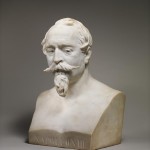 ObjectPosthumous Bust of Napoleon III, 1873-1874, by Jean-Baptiste CarpeauxAfter the fall of the Empire in 1870, the Emperor Napoleon III, in exile in Chislehurst (UK) was in poor health. The sculptor Jean-Baptiste Carpeaux (1827-1875) was summoned in 1872 to create the first sketches for an imperial bust. In the end, Carpeaux arrived after…
ObjectPosthumous Bust of Napoleon III, 1873-1874, by Jean-Baptiste CarpeauxAfter the fall of the Empire in 1870, the Emperor Napoleon III, in exile in Chislehurst (UK) was in poor health. The sculptor Jean-Baptiste Carpeaux (1827-1875) was summoned in 1872 to create the first sketches for an imperial bust. In the end, Carpeaux arrived after… -
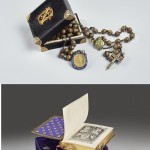 Object / 2nd Republic / 2nd Empire, IIe République – 2nd Empire/2nd Republic-2nd EmpireRosary and Prayer-book belonging to Empress Eugenie
Object / 2nd Republic / 2nd Empire, IIe République – 2nd Empire/2nd Republic-2nd EmpireRosary and Prayer-book belonging to Empress EugenieOf all the existing images of the Empress Eugenie, the photographs of her in prayer are the most iconic. This photographic portrait taken by Gustave le Gray in the summer of 1856 for the painter Thomas Couture, was widely disseminated after it was taken. This wasn’t the first time the Empress was captured in prayer; the […]
-
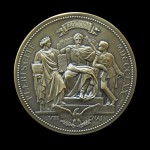 Object / 2nd Republic / 2nd Empire, IIe République – 2nd Empire/2nd Republic-2nd EmpirePlebiscite of 8 May 1870: Medal bearing the portraits of Napoleon III and Napoleon Eugène Louis, Prince Imperial
Object / 2nd Republic / 2nd Empire, IIe République – 2nd Empire/2nd Republic-2nd EmpirePlebiscite of 8 May 1870: Medal bearing the portraits of Napoleon III and Napoleon Eugène Louis, Prince ImperialThe Napoleonic regime was essentially autocratic and popular, and from the Consulate period onwards, plebiscites or referenda were organised so that civil society could give its opinion on matters of constitutional law, namely: – on the establishment of the Consulate in 1799 after the coup d’état of 18 Brumaire (plebiscite of 7 February 1800), – […]
-
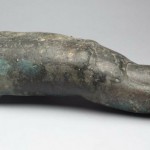 Object / IIe République – 2nd Empire/2nd Republic-2nd EmpireThe Finger of the statue of the Emperor Constantine: from the Campana collection to the Louvre
Object / IIe République – 2nd Empire/2nd Republic-2nd EmpireThe Finger of the statue of the Emperor Constantine: from the Campana collection to the LouvreIn June 2018, the Musée du Louvre issued a press release* informing the general public that they had solved a mystery more than 150 years old. Since 1862, the museum has owned a bronze finger, 38 cm in height, clearly a fragment from the hand of an ancient statue. The only thing we knew about […]
-
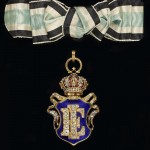 ObjectBrooch decorated with brilliants belonging to the Grande Maîtresse of the Empress’ Household, the Princesse d’Essling
ObjectBrooch decorated with brilliants belonging to the Grande Maîtresse of the Empress’ Household, the Princesse d’EsslingThe jewellery worn by the Ladies in Waiting or Dames of Empress Eugenie’s Household are indicative of the sumptuous nature of the Empire and the brilliant technicity of French jewellery. The broach here also had a practical use: unlike the men in service to the crown, the ladies had no uniform. A specific broach was […]
-
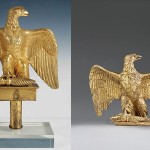 ObjectThe Imperial Eagles of the First and Second Empires
ObjectThe Imperial Eagles of the First and Second EmpiresIn the decree of 10 July 1804, Napoleon I stipulated that the new imperial coat of arms should be “d’azur à l’aigle à l’antique d’or, empiétant un foudre du même” (“azure, with an eagle in the manner of antiquity, coloured gold, clutching in its talons a thunderbolt of the same colour”). After the proclamation of […]
-
 ObjectRatapoil
ObjectRatapoilLouis-Napoleon Bonaparte’s election to the presidency of the Second French Republic, on 10 December, 1848, was the catalyst for a wave of militant opposition to the new regime. The Prince-President was all too aware that his post could only last four years and was not renewable, and so he pursued an intense campaign in 1850 […]

